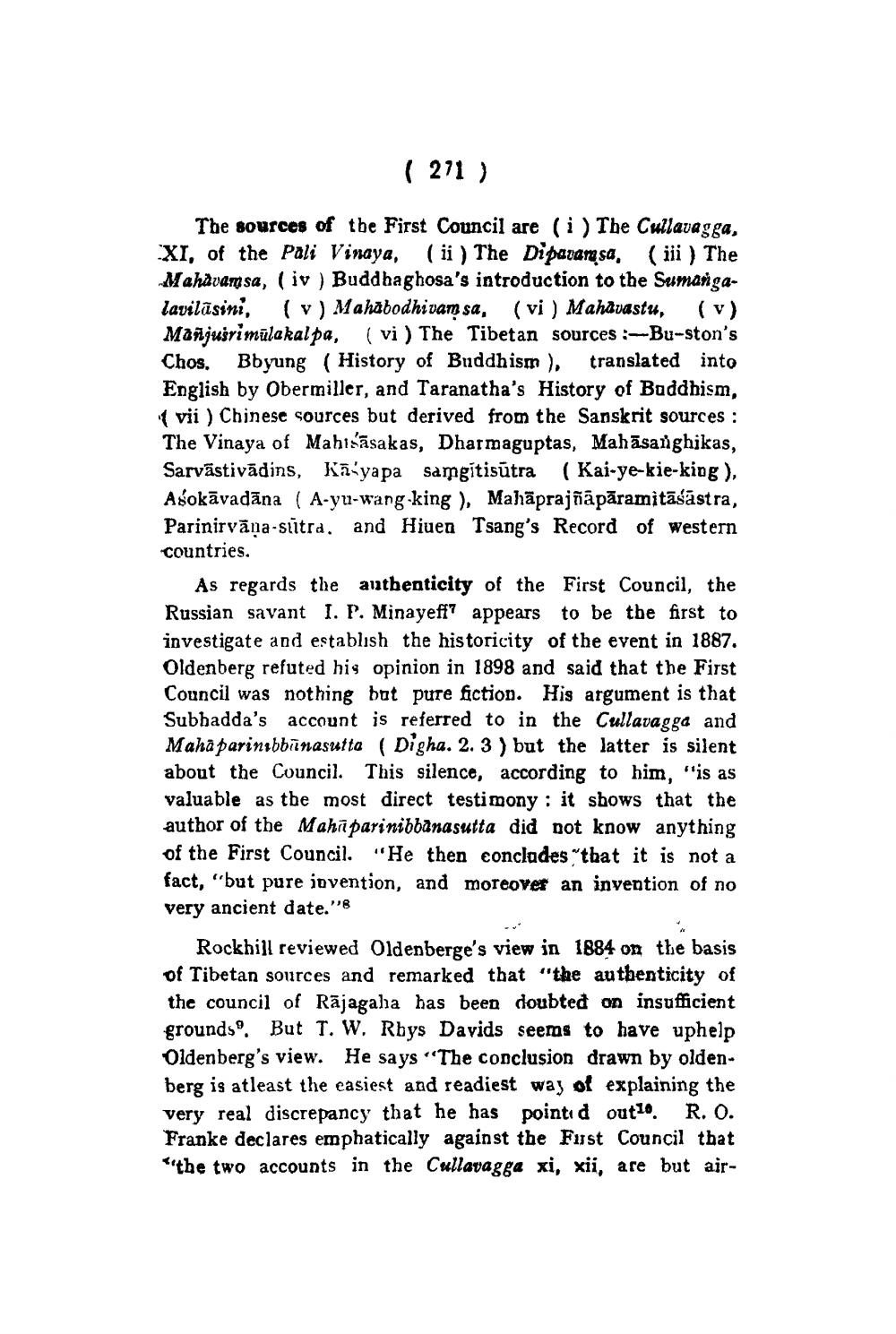________________
( 271 )
The sources of the First Council are (i) The Cullavagga, XI, of the Pali Vinaya, (ii) The Dipavarasa, (iii) The Mahavamsa, (iv) Buddhaghosa's introduction to the Sumangalavilasini, (v) Mahabodhivam sa, (vi) Mahāvastu, (v) Manjusrimulakalpa, (vi) The Tibetan sources :-Bu-ston's Chos. Bbyung (History of Buddhism), translated into English by Obermiller, and Taranatha's History of Buddhism, (vii) Chinese sources but derived from the Sanskrit sources: The Vinaya of Mahisasakas, Dharmaguptas, Mahāsanghikas, Sarvästivādins, Kayapa samgitisūtra (Kai-ye-kie-king), Aśokāvadāna (A-yu-wang-king), Mahaprajñāpāramitāśāstra, Parinirvana-sutra. and Hiuen Tsang's Record of western
countries.
As regards the authenticity of the First Council, the Russian savant I. P. Minayeff appears to be the first to investigate and establish the historicity of the event in 1887. Oldenberg refuted his opinion in 1898 and said that the First Council was nothing but pure fiction. His argument is that Subhadda's account is referred to in the Cullavagga and Mahā parinıbbūnasutta (Digha. 2. 3) but the latter is silent about the Council. This silence, according to him, "is as valuable as the most direct testimony: it shows that the author of the Mahaparinibbanasutta did not know anything of the First Council. "He then concludes "that it is not a fact, "but pure invention, and moreover an invention of no very ancient date."8
Rockhill reviewed Oldenberge's view in 1884 on the basis of Tibetan sources and remarked that "the authenticity of the council of Rajagaha has been doubted on insufficient grounds. But T. W. Rhys Davids seems to have uphelp Oldenberg's view. He says "The conclusion drawn by oldenberg is atleast the easiest and readiest way of explaining the very real discrepancy that he has pointed out10. R. O. Franke declares emphatically against the Furst Council that "the two accounts in the Cullavagga xi, xii, are but air




